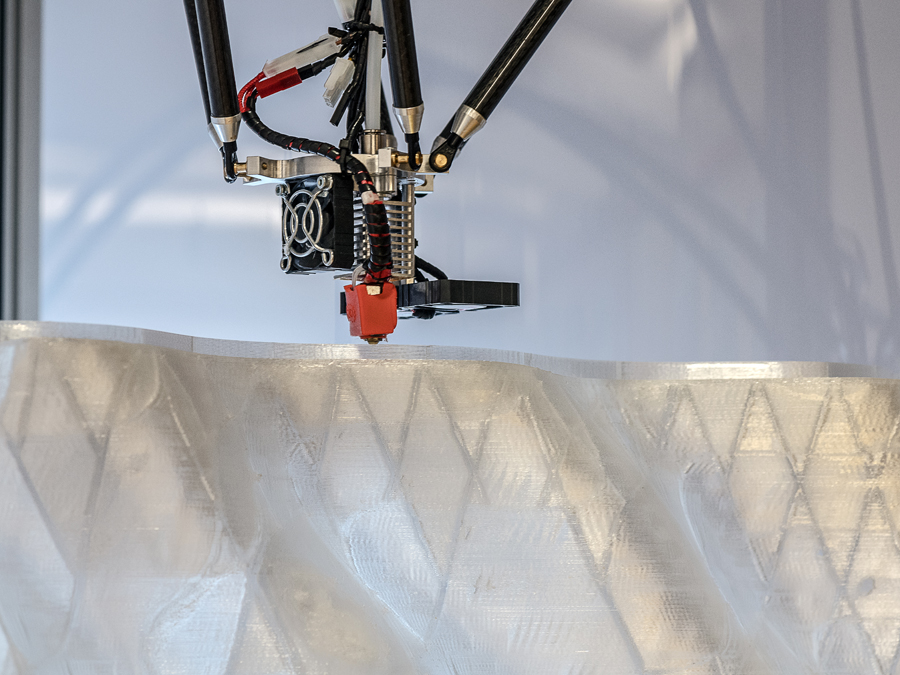International symposia at TUM
Additive manufacturing — a revolution in production engineering

Complex metal parts, not milled by a special-purpose machine, but instead structured successively by a laser in next no time from metal powder; casting molds created in a 3D printer from sand and a binding liquid: These are examples of additive manufacturing processes where defined material structures are built layer by layer. Such processes enable shapes that could not be realized before. At the same time, additive manufacturing contributes to a down-sizing of production chains.
In addition to numerous TUM chairs, the Fraunhofer Research Institution for Casting, Composite and Processing Technology (Fraunhofer IGCV), founded in 2016, also takes on a pioneering role. Here, scientists, among others, research processing technology, as well as multi-material processing, meaning, for example, that parts are manufactured from two different metals. Responsible for this work are professors Gunther Reinhart, Klaus Drechsler and Wolfram Volk from the TUM Department of Mechanical Engineering.
Simulation instead of trial and error
Research into additive manufacturing at TUM starts long before the actual printing process. Ernst Rank, Professor for Computation in Engineering and Director of the TUM Institute for Advanced Study (TUM-IAS), develops computer simulations, that aim at predicting the outcome of printing processes. “To date, these processes are usually optimized by trial and error,” says Rank. “To make additive manufacturing viable for industrial mass production, it would be essential to obtain the best possible results in the first print using simulation software.”
Reliable prediction of the mechanical properties of printed parts is a very sizeable challenge because of the many factors that need to be considered. In the laser printing of metals, selective laser melting for example, extremely high but very localized temperatures may lead to undesirable distortion or even to material damage. Professor Rank and his team are exploring new methods of calculation that take these particularities into consideration. “Additive manufacturing processes, especially those that create metal parts, have the potential to revolutionize production processesÆ, says Rank. “But broad-based use for the mass market means that the production chain from virtual computer model through to the ready part must function seamlessly. To achieve this, we need to perfect a fully digitalized manufacturing process.”
Two international research conferences
Leading international experts from 24 countries are meeting at the TUM-IAS from October 11 through 13 to will discuss resent developments in the field of simulation.
On October 11/12, representatives of research, politics and the economy convene at TUM to discuss business models, and applications of additive manufacturing, an event organized by Swiss technology companyOerlikon. Earlier this year, Oerlikon and TUM sealed a partnership agreement to speed additive manufacturing research at the juncture of theory and practice. Oerlikon aims to create a research center on the TUM campus in Garching, and thus lend impetus to the university's “industry on campus” strategy.
“The future technology of additive manufacturing has potential to change the world in the areas of product design, production and post-processing”, said TUM President Professor Wolfgang A. Herrmann in the leadup to the conference. “TUM has a very active commitment in this field thanks to its leading competence in engineering and informatics. We see this top-flight event as a modern platform for a whole number of contributors from industry, politics,and organizations. Our strength is founded on a wide-spanning and differentiated line-up of avant-garde basic research through to industrial use, accompanied by a strong and research-driven industry. This reciprocal and enriching potential is something lacking in the USA and in Asia. It is a great opportunity for the European scientific and industrial arena.”